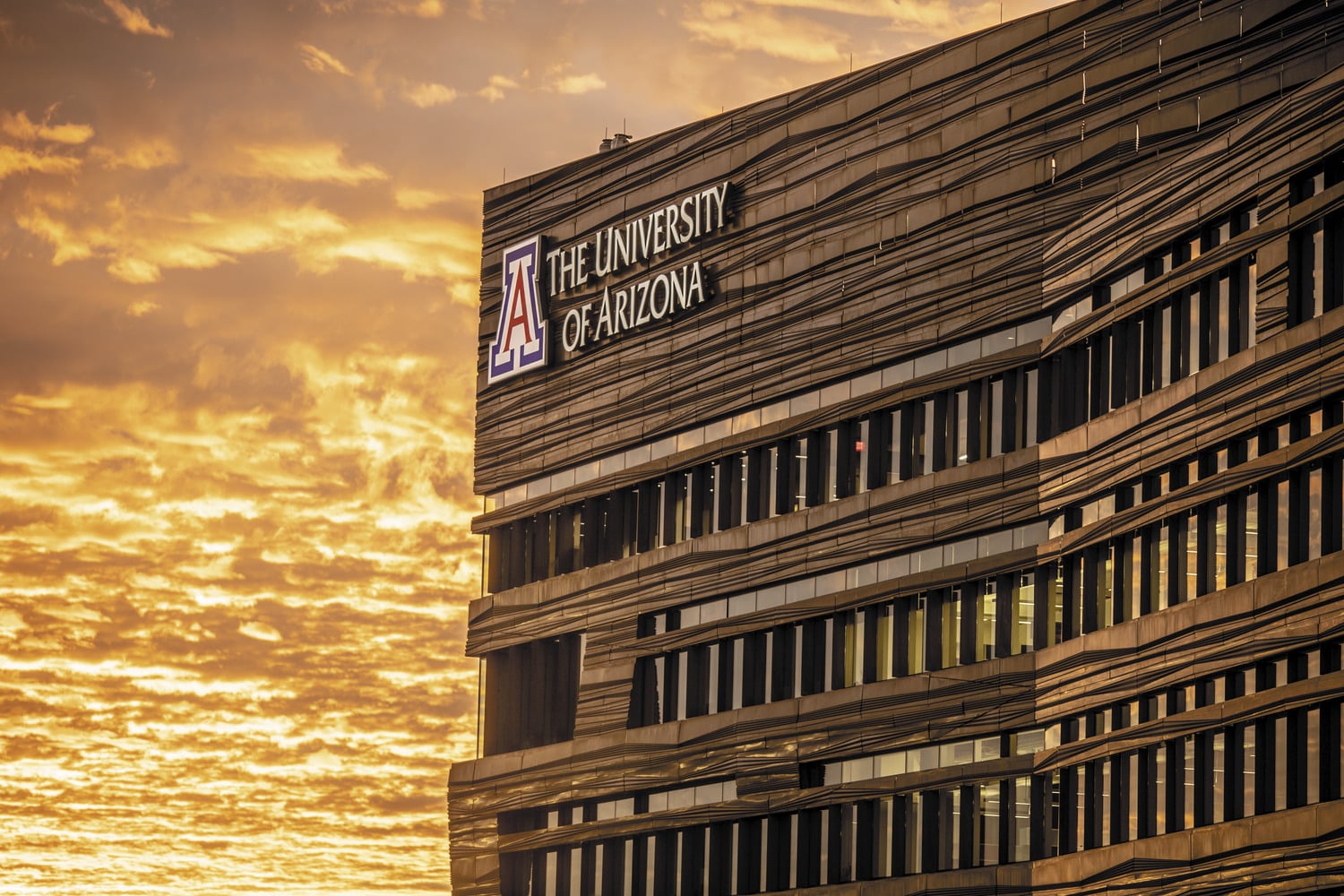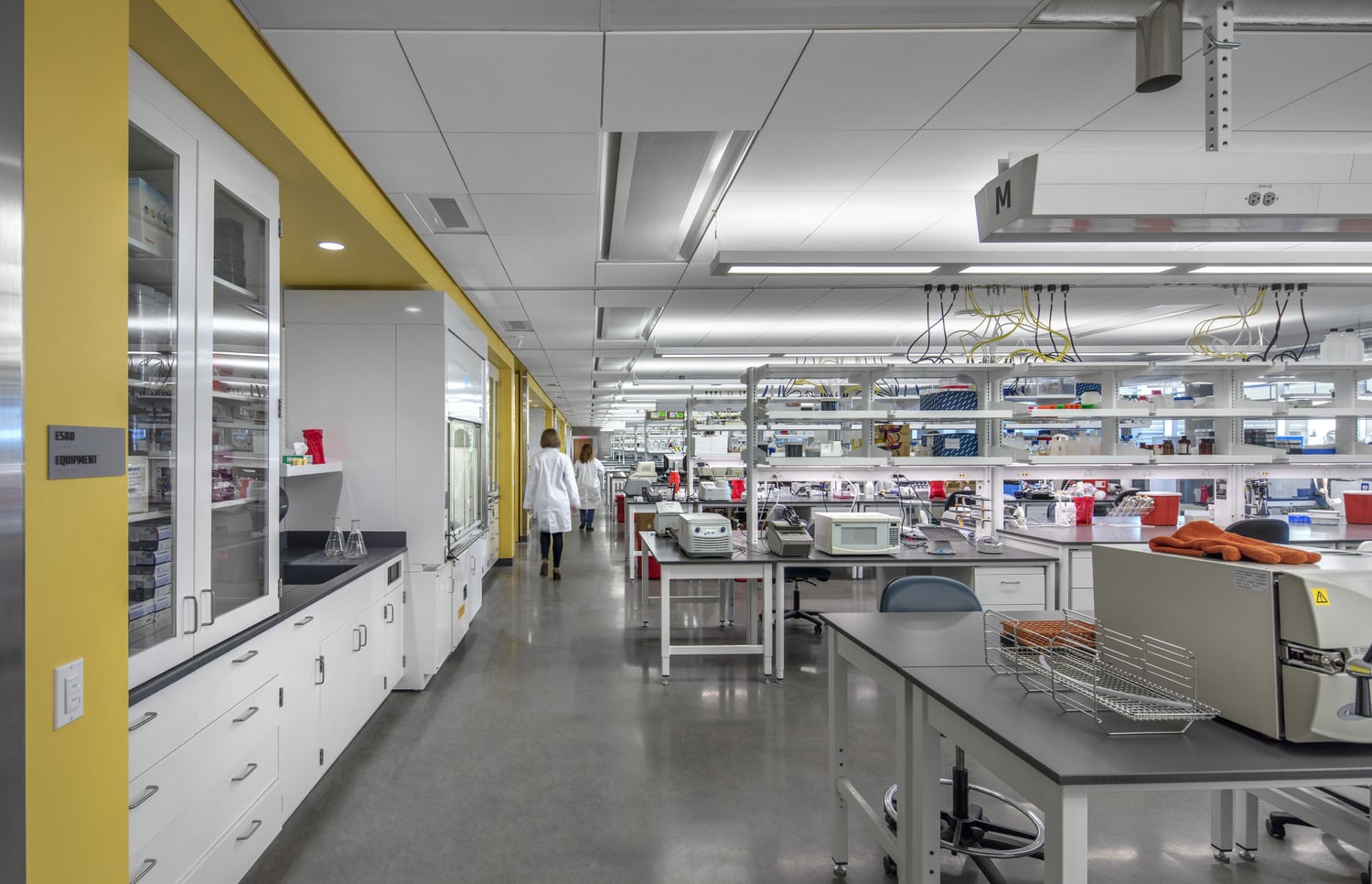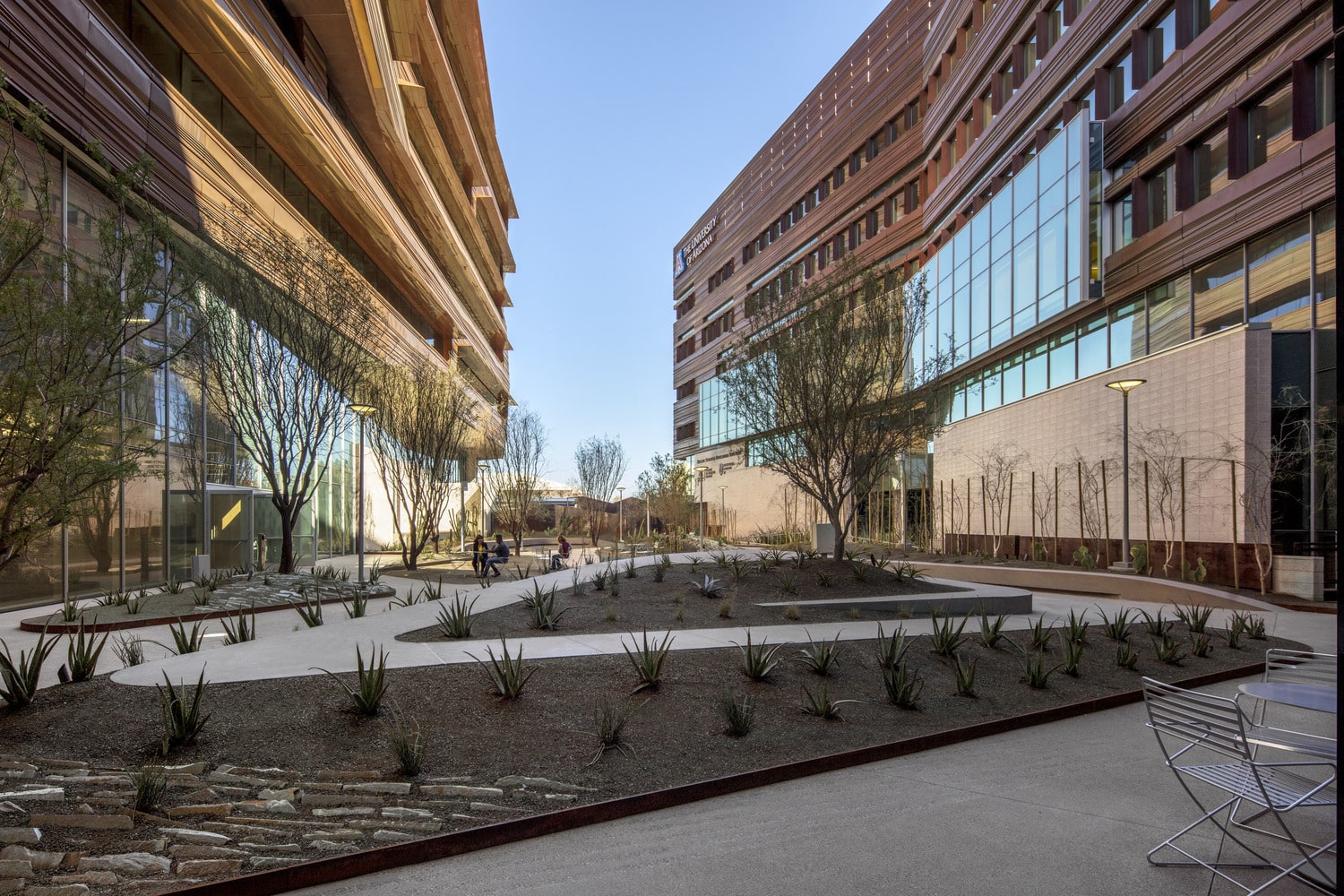
The construction of the Arizona Biomedical Sciences Partnership Building and a decade-long partnership with DPR Construction is coming to a close. The final phase is underway and involves building out the 2nd floor that will host the Center for Advanced Molecular and Immunological Therapies (CAMI) and finishing the basement, which will be a Biosafety Level 3 (BSL-3) laboratory space. This new space will allow the University of Arizona to expand their bioscience research capabilities.
The group of medical researchers with CAMI who will be utilizing this space became heavily involved in developing innovative therapeutic approaches during the COVID-19 pandemic in an effort to eradicate the virus. They will be conducting their important research on the new second floor that Sundt is building out and scaling up their operations.
Sundt, along with joint venture partner DPR Construction, finished the initial core and shell phase of the project in 2017. BSPB is a 10-story, 245,000-square-foot building containing seminar rooms, six floors of wet laboratory space, two floors of dry laboratory space, a loading dock, centralized water purification system and small vivarium. The initial buildout created laboratories for various areas of study and research, including flow cytometry, histology, microscopy, radioisotope and tissue culture in support of genomics and proteomics research. The upper floors host the dry laboratories for computational biology and biomechanical engineering. All the utilities were designed and built with flexibility and expansion in mind to accommodate the evolving pace of modern scientific research.

Many Sundt employee-owners who started with the project back in 2010 are still with Sundt, a few of them involved with this final phase 10 years later. Much of the design team and DPR’s team are also with the project, and this has helped immensely with the consistency in design throughout the various floors.
“The team is well-versed in not only the construction side of things but with the building itself as well, so there haven’t been many major challenges,” said A. Ben Perrone, project director. “However, building out the BSL-3 lab in the basement comes with a lot of additional considerations due to its extensive safety requirements. BSL-3 laboratories are used to study infectious diseases and toxins. These can be transmitted through the air and cause harmful or potentially lethal infections for anyone who comes in contact with them, so the infrastructure has to account for the additional safety features that protect the occupants.”

One aspect that did pose a challenge was the previously shelled basement space deep in the center of the building, which still had a dirt floor. The team had to figure out a way to get the materials and machinery for the concrete pour down into the basement without disturbing the occupied floors above. Use of the freight elevator would be unreliable as they would need to schedule around other users, and running materials through the operational floors with hand carts would create excessive labor costs. Instead, following the expertise of the concrete crew, the team decided to eliminate the base course and executed a plan to run a slick line through removable panels in the dock, pumping concrete along the basement corridor into the placement zone. Completing the work in the early morning, Concrete finished the 14-inch slab after just a few hours. The time saved with this approach more than paid for the additional slab thickness needed to account for the elimination of the base course.
Come spring of 2024, the Biomedical Sciences Partnership Building will be complete, and researchers and scientists with the University of Arizona Health Sciences will be able to expand their research capabilities to improve health outcomes for people across Arizona and around the world.
Sign up and stay up to date with Sundt’s activities in the Phoenix Metro